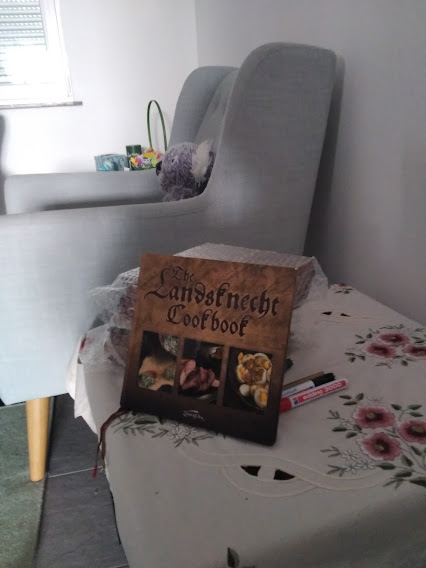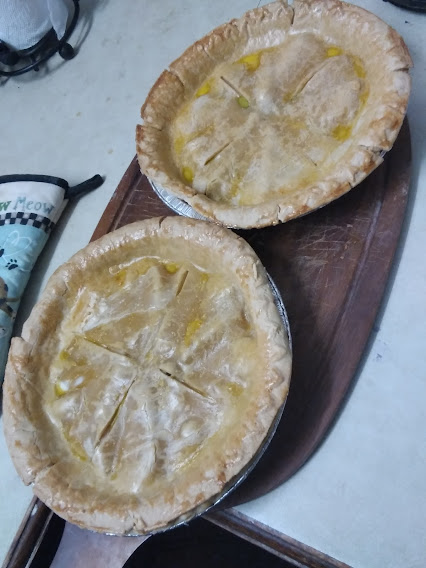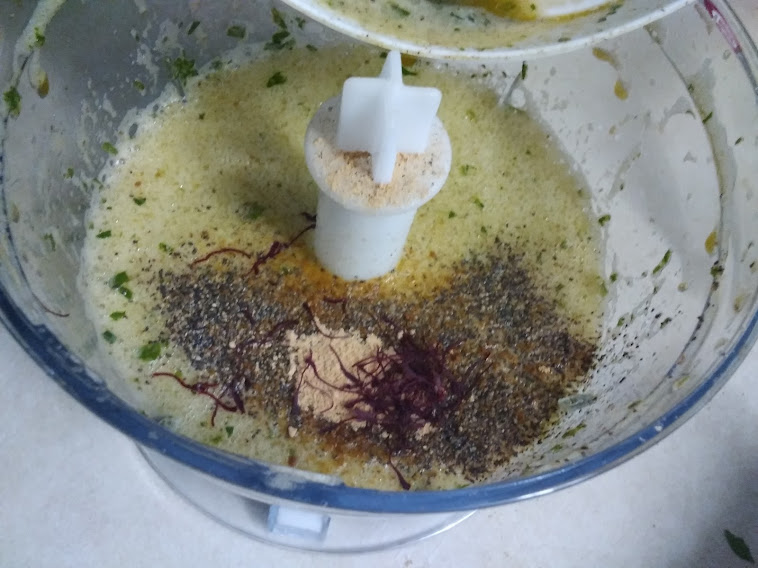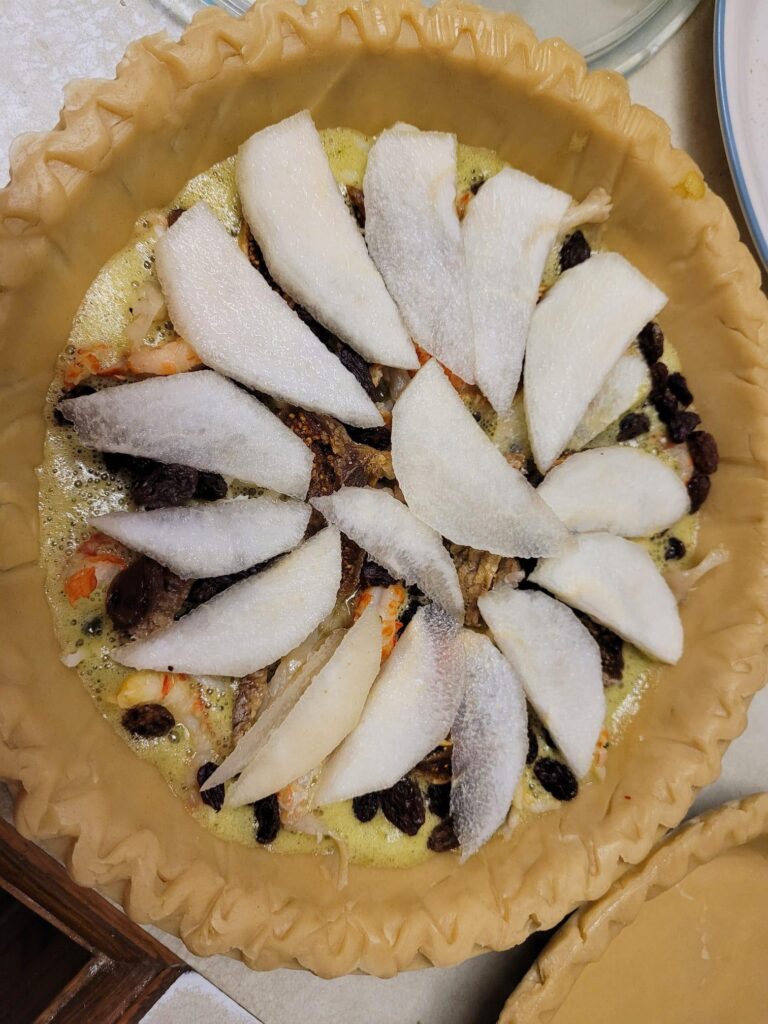To continue from yesterday’s post: Thanks to a most gracious hostess, I was able to hold a booksigning party to mark the launch of my Landsknecht Cookbook and prepare a Renaissance feast for the occasion.
First off: Yes, the English edition of the Landsknecht Cookbook is now available. You can order it directly from the publisher who will ship worldwide. I am hoping retailers in the US and elsewhere will also pick it up to bring down shipping costs.

To celebrate the occasion, I visited a group of medievalist friends in South Germany and brought some copies along to sign. These are the Kickstarter special edition which is currently shipping to subscribers and of which a few copies are still available.
And more to the point, we enjoyed a spread of Renaissance food that would have graced the tables of senior officers, and even that probably rarely. This is a sumptuous feast. We began with deer in pastry and a salad spread and today continue with pastries:
Crawfish Pastries

European crawfish (astacus astacus) were a popular delicacy especially inland, and many recipes survive. This is one of my favourites from the 1490 Kuchenmaistrey (the full translation is now with a publisher in the UK and should be out as a book this year): crawfish, fresh and dried fruit, cheese and spices, all baked into a pie.
1.xii Item you make pastries of crawfish thus, in a strong dough that is laid into a coffin (teighafen, lit. dough pot) inside a cooking vessel (hafenscherben). Make a lid above it and lay it down next to it. Boil the crawfish without salt, shell them nicely, and lay them (out?) together. Chop parsley very small take fresh eggs, beat them very well and pour them into the coffin. Cut good pears into long slices (i.e. lengthwise) and stick them into the filling. Take figs and raisins and put them in, and thrust the crawfish claws, bellies and tails into it lengthwise. Then take good wine and season it with spices and salt. Taste it to see what it lacks and pour it into the coffin over the filling. Close the lid over the coffin and close it up well. Beat an egg or two and brush the edges with that so they do not soften. Put fat between the coffin and the cooking vessel and set it in an oven. (or?) Let it boil or roast. Look at it and if it smokes, it is burning. Avert that by pouring on butter, thus it turns out well.
1. xiii Item to make a tart of crawfish. Make a tart dough laid out in a pan that is greased (schmaltzig). Make a filling of eggs and grated cheese or grated gingerbread, whichever you wish of the two, and temper it well and not too thinly. Pour it into the coffin (teigpfan). If it is too thick, mix it with good cream (until it is) just right. Season it with spices, salt, saffron and parsley. You may (also) take sage (and? or?) pennyroyal well chopped, that is all good, or other spices.
Temper the filling with that and thrust the crawfish into it.
If you wish to add pears, figs, or sweet apples sliced lengthwise with the crawfish, that is good. Make a cover over the coffin and pour fat on it. Set it over small embers (klein kolen glüt). And stacks hot embers around it more and more, or turn the pan around and around and wait for the smoke, and mitigate it with fat. And when the lid turns brown, it has had enough. Set the whole coffin in a wide serving bowl and serve it, and then make pieces of it and serve it to the guests courteously. That is fitting for crawfish.
Despite the differences in detail, this is basically a set of variations for the same dish: A pastry with an egg base, seasoned with herbs and/or spices and enriched, if desired, with cheese, cream, or wine, pre-cooked crawfish meat, dried fruit, and fresh pears. It looks incongruous to modern tastes, but it actually works very well. The most important issue to the author was the technique of applying melted butter as the shell cooked to prevent burning. In a modern oven, this is not a great concern, and we used storebought pie shells because of the time constrains.

I opted to use a soft, mild cheese in the egg filling, but in retrospect I believe that a sharp cheddar or other aged full-fat cheese would harmonise even better with the sweetness of the fruit. Cream went into some, to see if it made a difference, and the slightly richer taste was plweasant, but not decisively so. It is important to season the egg mixture generously, but not to let the sharpness of the pepper dominate. After sticking the crawfish in the filling, I generously distributed raisins and coarsely chopped dried figs, then covered the whole with a layer of thin slices of peeled and cored pear.

The pies are covered and baked slowly at 175°C so as not to burn the crust while the filling cooks all the way through. The whole can be served hot or cold, and I had a few slices as travel supplies the next day. They were still excellent eaten on the train.
Tomorrow, we will talk of game hens, and maybe almond pies
